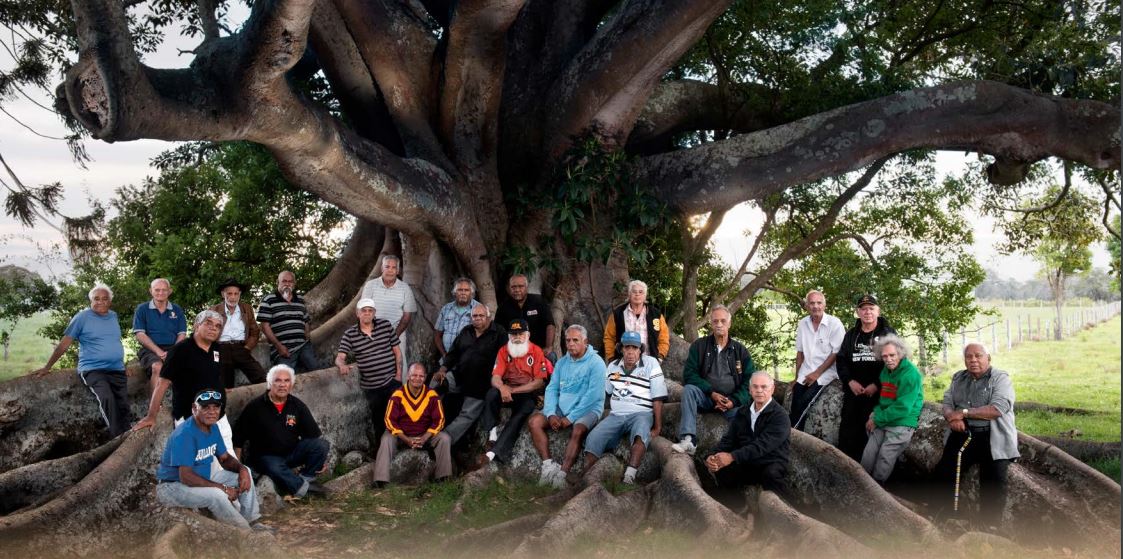Research and Investigation – Unlocking the Past
The former Kinchela Boys Home site is of deep significance to its survivors, their families and communities with memories, stories and associations, both difficult and otherwise, embodied in the place itself. As part of a long and complex healing process, the site and its deeply personal values must be made known to, and respected by, wider Australia. This Conservation Management Plan tells their stories and explores how this place may play a role in their journey of healing.
This is not a conventional Conservation Management Plan (CMP). This CMP seeks to capture the deeply personal importance of the former Kinchela Boys Home (KBH) site to survivors, their families and communities – wherever possible, in their own words. The CMP then offers ways to ensure that these values are retained, honoured, and where possible reinforced so that the significance of this place is understood by all of Australia and those visiting the site. As such, the methodology and structure of this CMP have been shaped by the explorations, investigations, workshops and meetings that were undertaken throughout the course of its preparation.
From 1924 to 1970, between 400 and 600 young boys (and a small number of girls in the institution’s first years) were incarcerated at the Kinchela Aboriginal Boys Training Home (Kinchela Boys Home) on the Mid North Coast of New South Wales. These children are among thousands of children across Australia who were systematically kidnapped from their families and communities under accepted Government and church policies and practices that created the Stolen Generations. The intent was to reprogram them to become ‘white’, an act tantamount to cultural genocide.
Under the authority of the New South Wales Aborigines Protection and its successor, the Aborigines Welfare Board, boys between the age of 4 and 14 years were taken from across the entire state and beyond and incarcerated at KBH, as shown on the map below. Many boys had already been through other institutions since being separated from their families, such as the Bomaderry Children’s Home in Nowra, Singleton Boys Home and Cootamundra Girls Home.
The longest surviving Aboriginal training facility for boys in NSW, Kinchela Boys Home is one of the most notorious institutions associated with the Stolen Generations. Conditions within the institution were harsh and hostile. This was a place where physical hardship, punishment, cruelty, alienation and abuse (cultural, physical, psychological and sexual) are documented as having been part of the day-to-day life endured by boys who were kept and made to work there.
Upon ‘leaving’ Kinchela Boys Home, the boys’ troubles did not end there. Institutionalisation and the legacies of their treatment have resulted in ongoing pain and trauma for survivors, their families and communities. The devastating effects continue to be felt by the descendants and families of the men, who struggle with intergenerational trauma.
Today, the former Kinchela Boys Home site is a place of deep significance to survivors, their families, the communities they were taken from, the local Kempsey and Macleay Valley community, and the broader community. Memories, stories and associations, both difficult and otherwise, are embodied in the place itself. As part of a long and complex healing process, the site and its deeply personal values must be respected by wider Australia.
Remaining buildings, landscape features and important spaces offer insight into the operation and conditions of the institution, and, as physical evidence of the reality and legacy of the Kinchela Boys Home, now provide the basis for truth telling. Envisaged as becoming a museum for the rich collection of oral and historical material already gathered, the site is entering its next phase. The story of the Kinchela Boys Home is once again set to become visible there at the site after having been silenced and made invisible.
Forming a key component in guiding future use, management and development, this Conservation Management Plan will ensure that the significance of the former Kinchela Boys Home site is retained and where possible strengthened so as to be understood and respected by all.
The process of research and drafting of this Conservation Management Plan has been one of close collaboration between consultant, Kinchela Boys Home survivors and members of the Kinchela Boys Home Aboriginal Corporation, facilitated through site visits, workshops, meetings and interviews. The process itself mirrors very closely the journey of many Kinchela Boys Home survivors that has been happening in parallel with preparation of this CMP. This journey involves re-connecting with the former Kinchela Boys Home site, understanding it and telling its stories, defining what is important about it, and then projecting forward into the future to explore how it may play a role in the journey of healing.
Worked on the project:
Kinchela Boys Home Survivors; Kinchela Boys Home Aboriginal Corporation; Design 5 – Architects; Kry8ve Productions; Roy Weiland in collaboration with Uncle Richard Campbell.
What the Judges said:
“Heartbreaking and necessary exploration of the past as the title suggests. We all know that we must embrace all aspects of our past if we are to ‘free the future’ but it can be a daunting challenge to do so. This CMP tells the stories of the role this place played in the 400-600 Aboriginal children from the Stolen Generation that were housed at Kinchela but ultimately it is a story about surviving and healing.”

